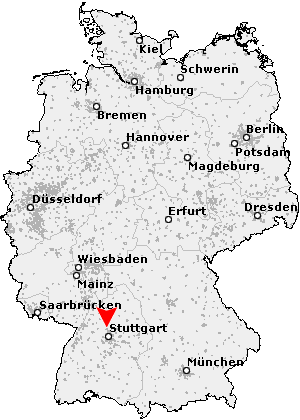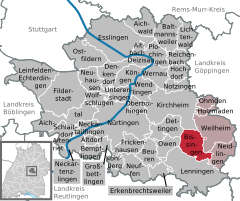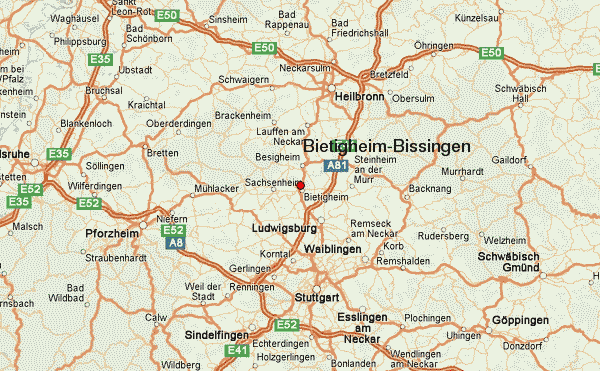Bissingen
Template: Infobox church in Germany / Maintenance / Bissingen market is a market town in the Swabian district of Dillingen on the Danube.
- 3.1 City Council and Mayor
- 3.2 Local Finance
- 3.3 Coat of Arms
- 3.4 community partnership
- 4.1 monuments
- 5.1 Economics
- 5.2 Education
Geography
Bissingen located in the Augsburg region and borders the district of Donau -Ries. By Bissingen and some of its part places the boiler flows.
There are the following districts: Bissingen, Buggenhofen, Burgmagerbein, Diemantstein, Fronhofen, Gaishardt, Göllingen, Hochstein, boiler Ostheim, Leiheim, Oberliezheim, Upper Ringingen, Stillnau, Thalheim, underbite Willingen, sub Ringingen, warning Mayrhofen, Zoltingen.
To Bissingen includes the hamlet book on Rannenberg, high village, Kallertshofen, Kömertshof, upper leg and lean Tuifstädt.
Geologically the municipality to Riesalb, the easternmost, only more foothills of the Swabian Alb.
History
Alemannische series grave findings point to an early occupation of the site. Was first documented in Bissingen around the year 1140 in a deed for the Canons Berchtesgaden. Already in 1281, the town was first described as a market. Bissingen was part and later the seat of the rule Hohenbourg -Bissingen who had come with much of the Kesseltals in the possession of the Counts of Oettingen before the year 1281. Since 1327 the place and the rule of owners had. One of them, the mercenary leader Sebastian Schertlin Burtenbach, was built in the years 1558/59 the present castle Bissingen.
1661, the market fell Bissingen and the government, which was now called the High Castle -Bissingen, back to the principality of Oettingen -Wallerstein. Bissingen became the seat of a Obervogt Office. With the Act of Confederation, in 1806 the city became part of Bavaria. 1818 a princely rule court was established in the course of administrative reform in Bavaria, which was dissolved in the revolutionary years of 1848/49 and converted to a district court. This was moved in 1862 after Blenheim. The parish church in Bissingen was newly built in the years 1858-1860 on the walls of the old church built in 1682. The 45 m high tower was preserved and onion is a landmark Bissingens.
1906 discovered the pharmacist Max Premauer in Bissingen a mineral spring, called Bissinger Auer source. This also led to the creation of several health resorts in Bissingen.
Incorporations
Population Development
Policy
City Council and Mayor
The market council has 16 members. Since the local elections of 2008, the seats are distributed on the following lists:
- CSU / citizens Block: 3 seats
- CBU / Christian citizens lower Kesseltal: 1 seat
- Christian voting bloc Upper Kesseltal: 2 seats
- CDU: 3 seats
- SPD: 1 seats
- Voters joint Ringingen: 2 seats
- Free Independent voters Lower Kesseltal: 1 seats
- FDP / Free citizens: 1 seat
- Wählergemeinschaft Oberliezheim: 1 seat
- Wählergemeinschaft Stillnau: 1 seat
Mayor since 1990, Michael Holzinger ( FW / CWB / WGU / FWU / WHO)
Municipal finances
In 2011, the municipal tax revenue amounted to € 3,653,000, of which € 1.993 million business tax receipts ( net).
Coat of arms
The coat of arms description reads: Split; front geschacht of gold and red, back in blue an upright, golden horse bit with curb chain.
Community partnership
Partner Municipality of Bissingen is Oberwiera in Saxony.
Attractions
- Castle Bissingen
- Pilgrimage Church of the Assumption in Buggenhofen
- Gypsy oak in Buggenhofen
- Michel Berg Fronhofen
- Postal Fronhofen
- Postal Hochstein
Monuments
Economy and infrastructure
Economy
It was in 2011 according to official statistics in the field of agriculture and forestry five, in the manufacturing sector and 620 in the trade and transport 90 persons work at the workplace. In other areas, were employed to social security at the workplace of 125 people. Social insurance contributions at residence, there were a total of 1373rd In manufacturing, there were three farms in the construction of eight farms. In 2010 there were also 95 farms with an agricultural area of a total of 3347 ha, of which 2356 were hectares of arable land and 987 ha of permanent grassland.
Education
There are in Bissingen a kindergarten with 100 kindergarten places and 84 children in care (2012 ), and two elementary schools, where 189 students are taught by 13 teachers (school year 2011/ 12).
Personalities
- Georg Danner († 1686 underbite Ingen ), architect of the Baroque
- Friedrich von Schreiber (1819-1890), born 1875-1890 Archbishop of Bamberg, in Bissingen
- Alban Haas (1877-1968), Catholic priest and prelate, home and church historian, born in the district Diemantstein










